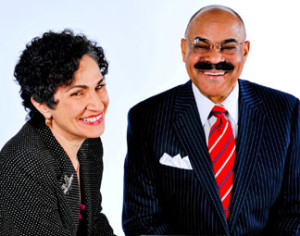
FUNdraising Good Times
Planned Confusion Solutions
Part Two of a Two Part Series
Planned confusion can take you down. It’s like a fog. It envelopes everything, but you can’t pin it down. Nothing is moving forward, but everyone says “I’m on board.” If you don’t intervene you may find yourself – and your organization – strangled by exasperation and inertia. Here are five suggestions to keep you from a frightful future.
Commitment. Everyone may say they are committed, but the question is this: committed to what? Make sure that you, your staff, board members and volunteers know and understand the mission, goals and vision of the organization. Most importantly, find out if everyone is bought into these. Take the time to have challenging conversations re: mission, vision and goals. When people are silent, it doesn’t mean they agree. But, silence without commitment can equal lack of follow through, absence at meetings and subtle sabotage.
Roles and responsibilities. Everybody should understand their role and responsibilities. For example, “raise $100,000 by Friday” is not a reasonable responsibility. “Work with the fund development committee of the board to identify, cultivate and solicit major donors” is more reasonable. Add a date that answers the question “by when.”
End meeting confusion. Develop standards for how meetings will be conducted, including who will lead each meeting. If you are chairing an upcoming meeting, schedule pre-meeting discussions with each person who will be attending. Share the proposed agenda and discuss agenda items in order to surface disagreements or alternative solutions so that you won’t be surprised in the larger meeting. Talk through disagreements and alternatives, and use the information gained to find a “third way.” When meeting participants will be presenting information or reports, speak with each beforehand to ensure they are prepared. Momentum is easily killed by participants who report, “we didn’t have time to complete the project.”
Stay with the agenda. Officially distribute a meeting agenda prior to each meeting. Where possible, include suggested timeframes for specific items. Start each meeting by communicating expected outcomes; end with agreed upon next steps and due dates with a person responsible for each. Don’t let any one person dominate the meeting; solicit engagement by those who don’t actively participate. Quickly identify and where possible resolve issues as they come up. Stay with the defined agenda – keep the focus on the purpose of the meeting. At the end of each meeting use an evaluation form to learn what’s working and what’s not. Be open to criticism and change.
Create a culture of clarity, accountability and transparency. Do what you say. Say what you mean. Don’t obfuscate. Hold yourself accountable, and encourage others to hold you – and themselves – accountable. Establish meeting norms, and create expectations regarding related to timeliness, participation and being prepared. Develop meeting norms and processes that are a fit for your organization’s culture and that will engage and energize meeting participants. Consider using a consultant to help.
You and your organization deserve the best. Put steps in place to prevent “planned confusion.”
Read part one: planned confusion. Copyright 2017 – Mel and Pearl Shaw
Mel and Pearl Shaw are authors of four books on fundraising available on Amazon.com. For help growing your fundraising visit www.saadandshaw.com or call (901) 522-8727.
